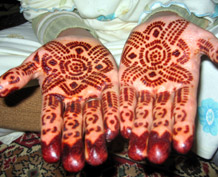Travel Morocco’s World of Henna on Video
Take a look at this video of a woman receiving a Henna Tattoo. The intricacy of the design is amazing and the woman is drawing it free-hand! Travel Exploration specializes in Morocco Travel. We provide Tours and travel opportunities to Morocco for the independent traveler and tailor-made tours for families…




